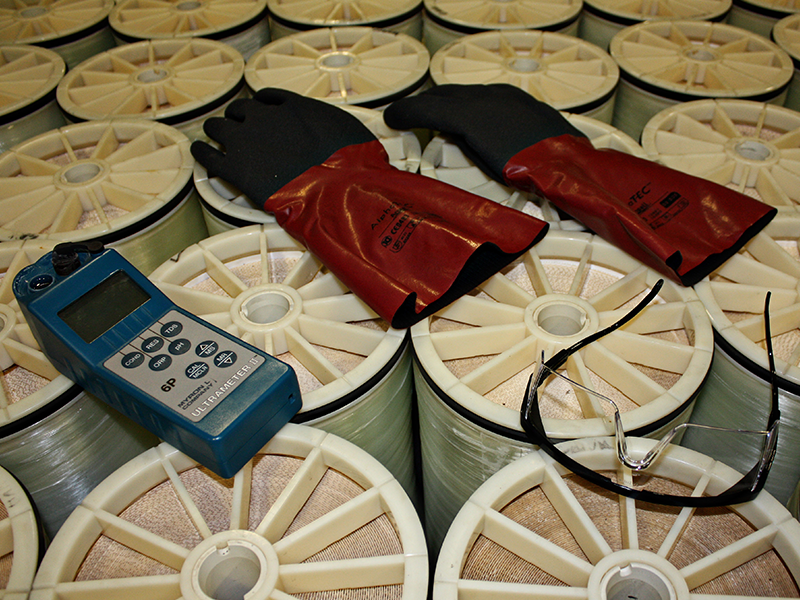Every day consumers research and identify what goods and services are available in the market for the particular area they are looking for. They buy based on the features they value and the price they are willing to pay. It's not very common that a consumer will buy without some level of evaluation. Contrast that with decisions in the industrial world and many times that level of evaluation doesn't take place. Rather, we often hear generalities like “…all chemicals are the same…” or “…everyone provides service.” These generalities may be due to negotiating tactics or the users' lack of awareness of the differences between the various goods and services.
In the realm of water treatment, Reverse Osmosis (RO) membranes are a particular area that is commonly subject to these generalities. This is primarily due to the fact that the original thin-film composite (TFC) membranes generated a few decades ago were generally the same with respect to performance and pricing. Over time the industrial community solidified a perception that “RO membranes are the same.” While that perception and statement may have arguably been true in the past, manufacturers are innovating at a fast pace and the industry is changing due to the characteristics that these new breeds of RO membranes exhibit. Industrial users would benefit approaching the evaluation of RO membranes like they do purchases in their personal life…do some evaluation to understand the features of each. Important considerations need to be taken into account like the feed water characteristics, the mechanical capabilities of the machine and the performance requirements of the downstream users. U.S. Water is both technology and manufacturer agnostic and can evaluate a given application through unbiased glasses. The fact that U.S. Water specializes in not only equipment design but also on-going chemical supply and consulting services, provides us a unique opportunity to partner with our clients to help them understand their options by taking into account all aspects of the process.
Just a few years ago the evaluation of RO brackish water membranes was relatively simple and consisted of answering a few questions like:
- What diameter?
- How many square feet per membrane?
- Regular pressure or low-energy?
Most answers were clear and easy based on the capacity requirement and the significant permeate quality differences between regular elements and low-energy versions.
Fouling Resistant
The issue of water conservation is becoming more important and people and businesses are talking about it more regularly. Successful companies that understand the importance of sustainability are acting on this issue and looking at ways to reuse water or utilize impaired water as make-up to industrial processes. As a result, water treatment companies like U.S. Water are continuously challenged with designing mechanical and chemical treatment strategies and processes to deal with these challenging applications.
Many times RO technology is part of the solution and as a result the RO membranes can be subject to challenging conditions that might have higher fouling or bioactivity characteristics. Fouling resistant membranes help prolong the run-time of an RO machine by helping prevent accumulation of foulants on the surface of the RO membranes, which results in the need for frequent membrane cleaning. Customers can see the benefit in prolonged membrane life, less operator time, less CIP waste/cost and increased up-time availability.
Extra High Rejection
Historically high purity water was produced using ion exchange processes like mixed-bed demineralizers. When RO systems came along they proved beneficial in pretreating the water to help reduce the operational costs associated with regenerating the resins. In addition electrodeionization (EDI) has become a more industry accepted treatment step and providing EDIs with better feedwater quality enables better product water and less energy. The feedwater to an EDI is a function of the salt rejection of the RO membranes feeding the unit. Newer RO membranes are capable of achieving a higher level of salt rejection, which translates to less maintenance and operating costs associated with the downstream unit operations. In addition, organizations like EPRI in the power industry, have lowered recommended limits like silica and can make it difficult for certain legacy water treatment systems to achieve those levels. Having the ability to attain greater salt rejection helps users achieve newer processing limitations.
Low Energy, High Rejection
“Low Energy” elements have been around for some time; however, their use was traditionally limited to applications that could tolerate a fair amount of salt passage. Recent advancements are narrowing the gap in the differences in rejection and in many cases we are seeing nearly identical salt rejection performance of older “traditional” membranes versus the newer low energy, high rejection elements. The benefit is obviously the reduced operating costs associated with pumping pressure. In new applications, the machines can be designed with these new membrane characteristics used as the design basis, which affords a manufacturer like U.S. Water to reduce the capital costs of the machine and still get equivalent performance.
The issues surrounding water are becoming more complicated by the day and the myriad of options available to tackle these challenges continues to grow. Industry users are encouraged to resist the temptation to generalize. Companies should either develop in-house capabilities and skill sets to keep abreast of this changing industry or partner with a solutions company that can help evaluate the options based on what's available in the industry.

